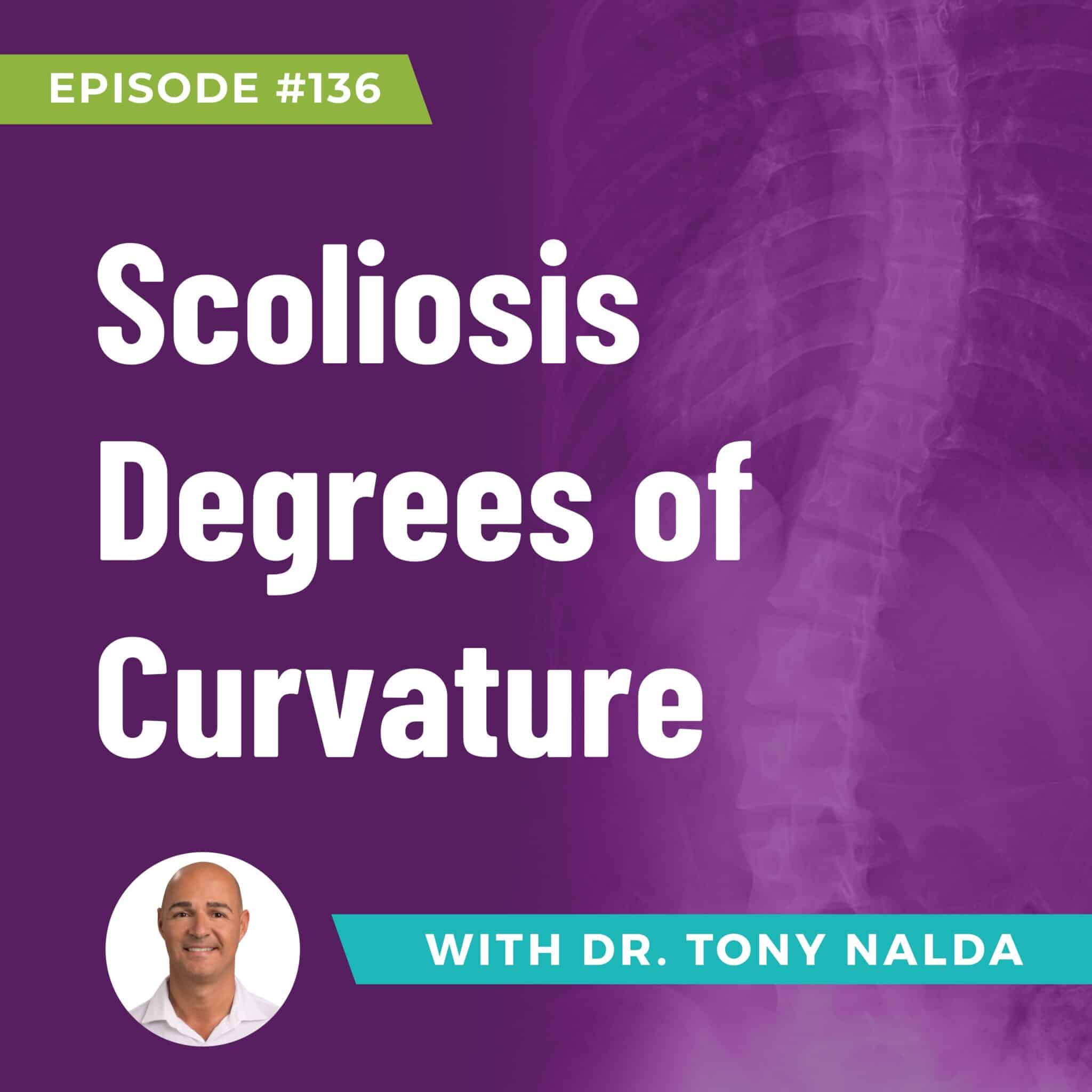Episode 136: Scoliosis Degrees of Curvature
Understanding Scoliosis: Degrees of Curvature and Treatment Implications
In this episode, we explore the implications of scoliosis curvature on treatment options, ranging from mild to very severe cases. Dr. Tony Nalda delves into the specifics of scoliosis diagnosis, its progression, and how these factors influence the course of treatment.
Defining Scoliosis and Its Severity
- Diagnosis: Scoliosis is characterized by a sideways curvature of the spine of at least 10 degrees, accompanied by rotation.
- Classification by Severity:
- Mild Scoliosis: 10 to 25 degrees
- Moderate Scoliosis: 25 to 40 degrees
- Severe Scoliosis: Over 40 degrees
- Very Severe Scoliosis: Over 80 degrees
Treatment Strategies by Severity
- Mild Scoliosis:
- Traditional Treatment: Often involves observation only, with no active intervention.
- Functional Approach: May include chiropractic care, specialized exercises, and possibly corrective bracing to prevent progression.
- Moderate Scoliosis:
- Traditional Treatment: Options vary; some doctors recommend bracing (e.g., Boston brace), which aims to slow progression rather than reduce curvature.
- Functional Approach: Emphasizes reducing the curve through intensive chiropractic care, in-office rehabilitation, home therapy, and corrective bracing.
- Severe Scoliosis:
- Traditional Treatment: Primarily surgical, involving spinal fusion to stop curve progression and possibly reduce curvature.
- Functional Approach: Focuses on bringing the curvature below the surgical threshold using non-invasive methods like advanced bracing and comprehensive rehabilitation programs.
- Very Severe Scoliosis:
- Traditional Treatment: Almost exclusively surgical, with spinal fusion being the primary option.
- Functional Approach: For patients refusing surgery for personal or religious reasons, treatment aims to reduce curvature as much as possible through intensive, ongoing care.
Key Insights
- Growth and Progression: Growth spurts are a significant factor in scoliosis progression. Early and proactive treatment is crucial, especially in young patients, to manage and potentially reduce curvature before it becomes severe.
- Customization of Care: Scoliosis requires a personalized treatment approach due to the unique nature of each case. The type of scoliosis, its location, and severity all dictate the specific interventions required.
- Long-term Management: For higher degrees of curvature, even if non-surgical methods do not completely resolve the condition, they can improve quality of life and spinal function, potentially avoiding or delaying the need for surgery.
Conclusion
Scoliosis treatment varies significantly based on the curvature's degree and the patient's growth phase. Dr. Nalda advocates for early intervention and a functional approach over traditional methods that often wait until progression necessitates invasive procedures like surgery. Each scoliosis case demands a tailored treatment plan, with a strong preference for reducing curvature non-invasively to avoid the complications associated with surgical interventions.
For more insights into managing scoliosis and other related topics, subscribe to our channel and click the bell icon for updates.
Musicbed SyncID: MB01TZ6VH1I7UDD
Podcast: Play in new window | Download
Subscribe: RSS
Dr. Tony Nalda
DOCTOR OF CHIROPRACTIC
After receiving an undergraduate degree in psychology and his Doctorate of Chiropractic from Life University, Dr. Nalda settled in Celebration, Florida and proceeded to build one of Central Florida’s most successful chiropractic clinics.
His experience with patients suffering from scoliosis, and the confusion and frustration they faced, led him to seek a specialty in scoliosis care. In 2006 he completed his Intensive Care Certification from CLEAR Institute, a leading scoliosis educational and certification center.
About Dr. Tony Nalda
 Ready to explore scoliosis treatment? Contact Us Now
Ready to explore scoliosis treatment? Contact Us Now








